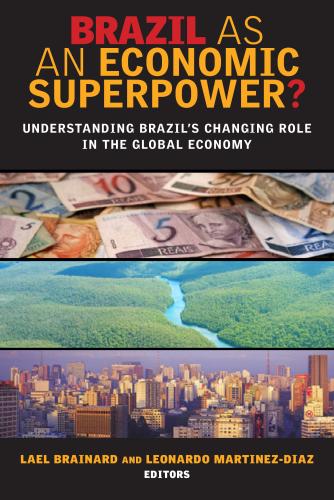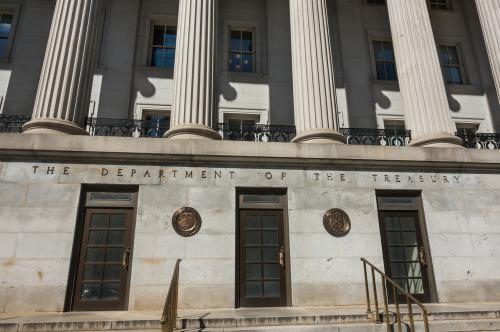Studies in this week’s Hutchins Roundup find that Medicare and Medicaid negotiate lower prices with hospitals than private insurers, monetary policy can affect the real economy through the stock market, and more.
Want to receive the Hutchins Roundup as an email? Sign up here to get it in your inbox every Thursday.
Private insurers pay hospitals significantly more than Medicare and Medicaid
The prices insurers negotiate with hospitals are shrouded in secrecy. Toren L. Fronsdal, Jay Bhattacharya, and Suzanne Tamang from Stanford examine the differences in inpatient reimbursement rates paid by private and public insurers. Employing a data set accounting for $1.8 trillion in hospital charges across 474 hospitals from 2009 to 2016, they find that Medicare Advantage and private insurers pay hospitals 10% and 37% more, respectively, than traditional Medicare, while Medicaid pays 21% less. Moreover, they show that a 10% increase in insurer market share is associated with a 7 percent decrease in prices negotiated by insurers, as well as a reduction in the variability in prices. The authors’ findings suggest that “when insurers hold greater market power, they are more likely to negotiate prospective payment contracts, paying providers based on the diagnosis rather than the actual treatments the patient receives.”
Investment in equities is more important to transmission of monetary policy than consumption
Textbook macroeconomic models of monetary policy focus on how changes in interest rates influence household consumption decisions, not their investment allocation decisions. However, monetary policy is widely believed to have a profound impact on the stock market. Davide Melcangi and Vincent Sterk from the Federal Reserve Bank of New York assess the importance of the “stock investment channel” in the transmission of monetary policy to the real economy. Following an increase in interest rates, the opportunity cost of holding investments in non-interest-bearing assets increases. Accordingly, a higher interest rate induces households to move money from the stock market towards saving accounts, squeezing the equity funds available for capital investment. This depresses business investment, output, and income, leading to an even larger decline in stock investment. The authors find that the stock investment channel is quantitatively important and dominates the consumption channels emphasized in the literature. Moreover, it has become more relevant since the 1980s when stock market participation and income inequality increased significantly.
Emerging economies vulnerable to U.S. dollar funding cost shocks
Banks based outside the U.S. increasingly borrow and lend in U.S. dollars, making them acutely sensitive to changes in U.S. monetary conditions and changes in global risk appetites, as seen during the global financial crisis of 2007-9 and the Covid pandemic. Using Bank of International Settlements data on 26 advanced and emerging economy banking systems, Adolfo Barajas and co-authors from the International Monetary Fund find that shocks to U.S. dollar funding costs lead to financial stress in the home economies of these global banks and can harm bank borrowers, particularly in emerging markets whose banks have a large gap between U.S. dollar assets and liabilities. Increases in U.S. dollar funding costs also negatively affect cross-border lending by these non-U.S. banks, causing another problem for emerging-market borrowers with few alternatives. The authors conclude that regulators should monitor local banks’ U.S. dollar assets and liabilities, and banks should be sure to have adequate access to liquidity in currencies in which they operate. Currency swap lines between central banks, ample international reserves and a strong global financial safety net (including IMF flexible credit lines) can mitigate strains caused by volatility in U.S. dollar markets.
Chart of the week:
Quote of the week:
“The containment measures of the COVID event represent the biggest test that the financial system has faced since the global financial crisis of 2007-08. After years of reforms, we now face a real-life stress test even more severe than those previously hypothesized. But unlike the global financial crisis, this shock originated from outside the financial system….We know that the financial system will face more challenges. The corporate sector entered the crisis with high levels of debt and has necessarily borrowed more during the event. And many households are facing bleak employment prospects. The next phase will inevitably involve an increase in non-performing loans and provisions as demand falls and some borrowers fail. The official sector is providing a rapid and coordinated response to support the real economy, maintain financial stability, and minimize the risk of market fragmentation,” says Randal K. Quarles, Vice Chair of the Federal Reserve Board of Governors
The Brookings Institution is committed to quality, independence, and impact.
We are supported by a diverse array of funders. In line with our values and policies, each Brookings publication represents the sole views of its author(s).











Commentary
Hutchins Roundup: Health insurance, stock market participation, and more
July 9, 2020